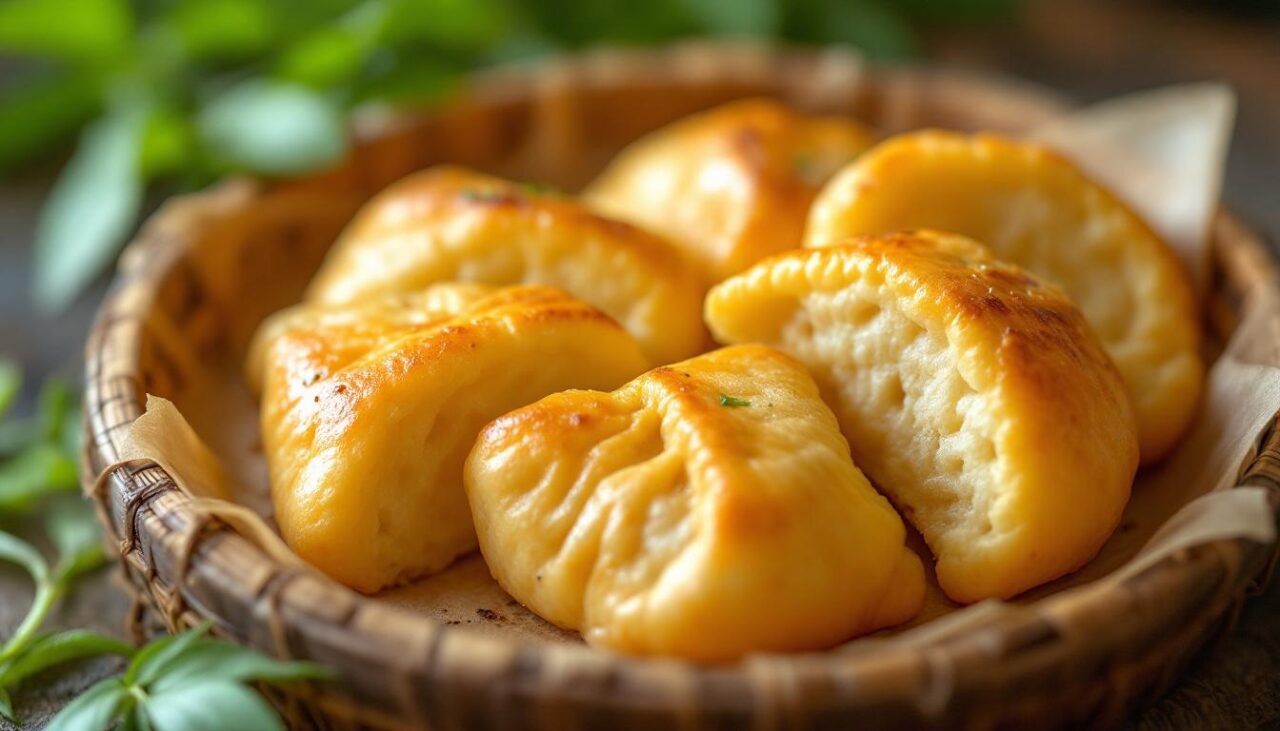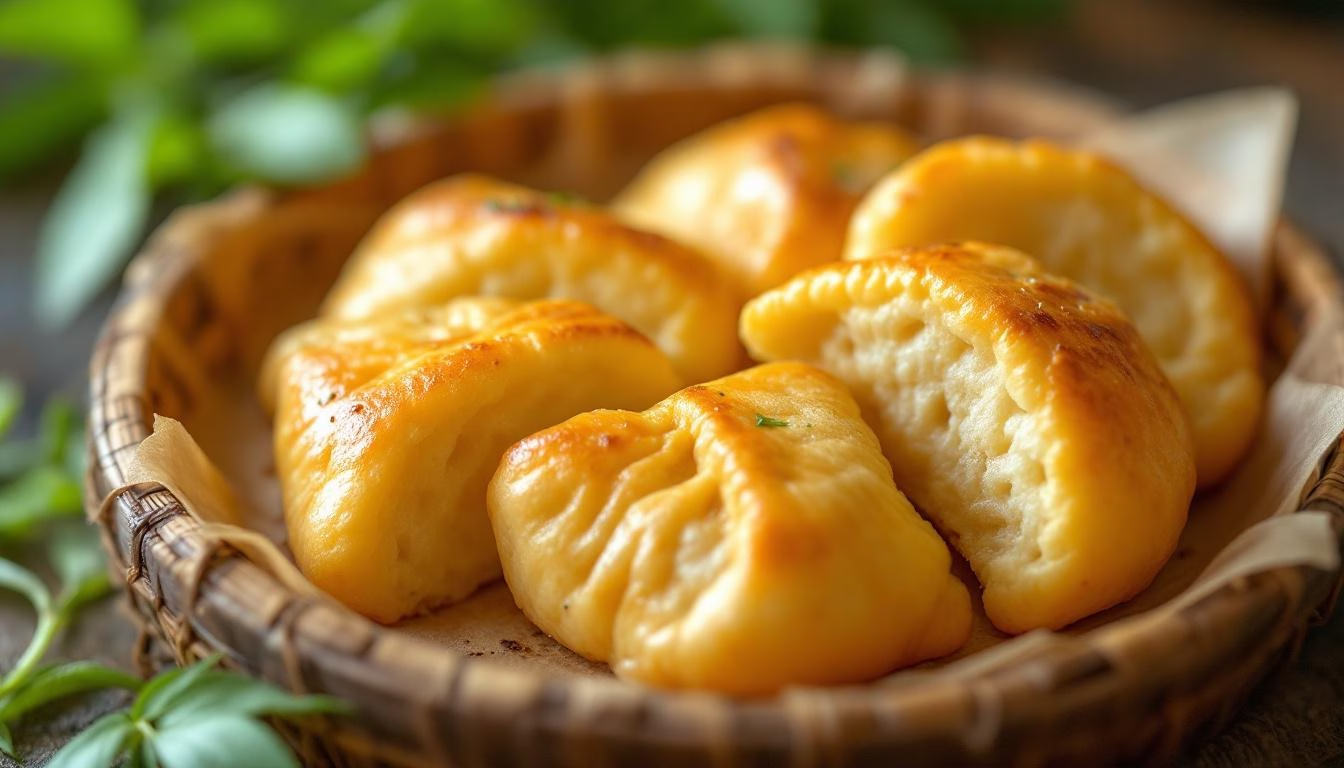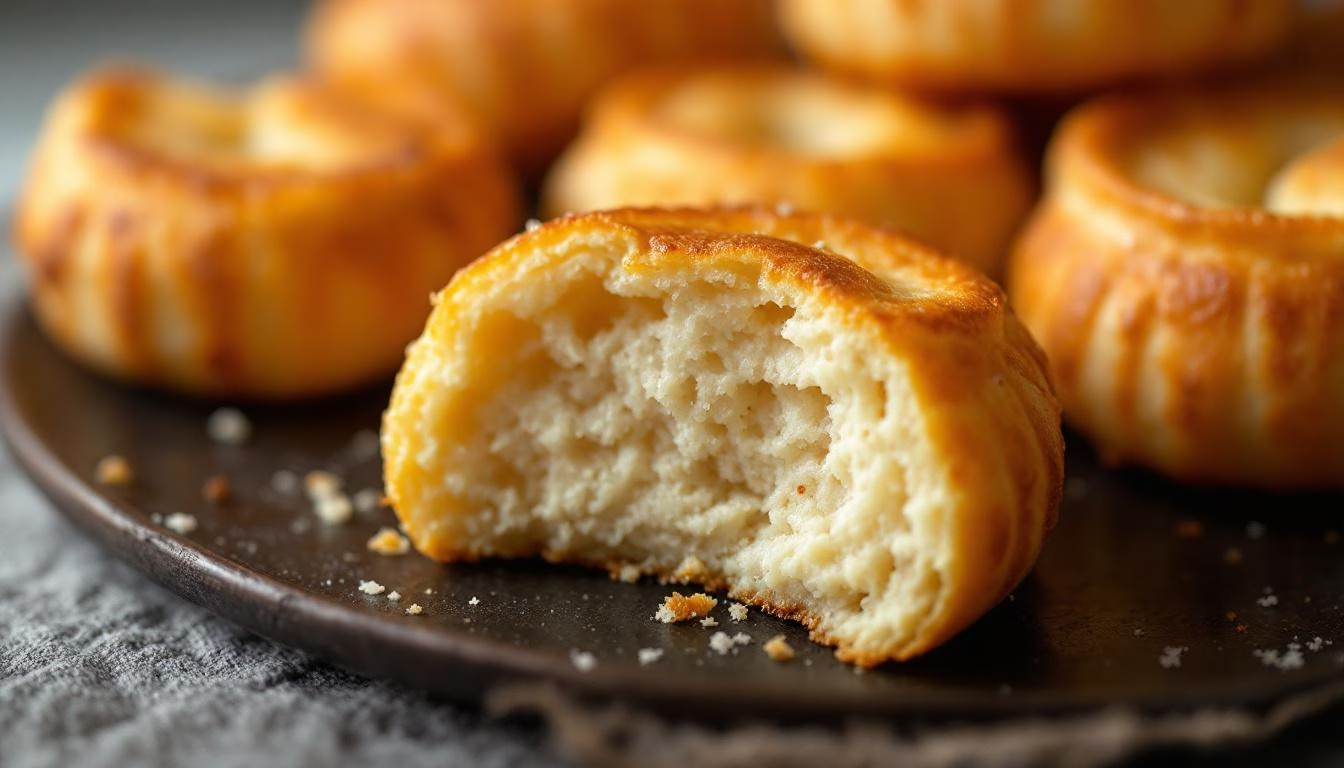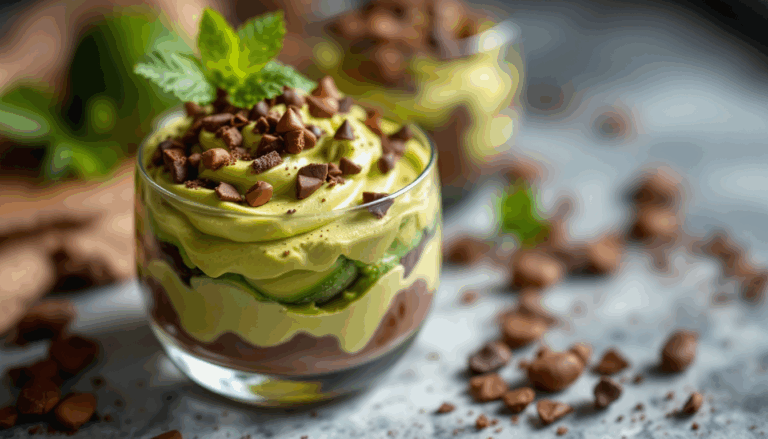Roti Kukus Recipe: Indonesian Sweet Steamed Bread
How to Make Authentic Roti Kukus: Indonesian Steamed Bread Magic – Roti Kukus Recipe – Let me tell you about the time I accidentally discovered that my kitchen could transport me halfway around the world with nothing more than a steamer basket and some very colorful batter.

Roti Kukus (Indonesian Sweet steamed bread)
Ingredients
- 2 ¼ cups all-purpose flour
- 2 teaspoons baking powder
- ½ teaspoon baking soda
- ½ teaspoon salt
- ¾ cup sugar
- ½ cup canola oil (vegetable oil, or sunflower oil)
- 1 ½ cups unsweetened plant-based milk
- 1 tablespoon apple cider vinegar
- 1 teaspoon vanilla extract
- ½ teaspoon coconut extract (optional)
- 2 tablespoons Dutch-processed cocoa
- 1 ½ teaspoons pandan extract
Instructions
- In a bowl, whisk all-purpose flour, baking powder, baking soda, and salt, then make a well in the center.
- Into the well, add sugar, plant-based milk, oil, apple cider vinegar, vanilla extract, and coconut extract (if using), then whisk until the batter is smooth and thick.
- Divide the batter among three bowls. Mix cocoa into one portion, pandan extract into another, and leave the third plain.
- Lightly oil the baking molds with neutral-tasting oil, use cupcake wrappers, or line the steaming trays or molds with parchment paper.
- Pour the dark-colored batter on the bottom, the plain batter in the middle, and the pandan-colored batter on top in each tray or mold. If desired, lightly dust the tops with vanilla sugar or vegan caster sugar.
- With the steamer over medium heat (do not let the water fully boil), steam the bolu kukus for 20–25 minutes until the centers have risen; it is fine—and some people prefer it—when the kukus naturally split open. Allow them to cool for ten minutes, then slice and enjoy your layered Roti Kukus.
Nutrition
It was one of those dreary Tuesday afternoons when I was desperately craving something sweet but couldn’t bear the thought of turning on my oven—because honestly, who wants to heat up their entire apartment when it’s already feeling like a sauna?
I’d been scrolling through Indonesian food blogs (as one does when procrastinating on actual work), when I stumbled upon these gorgeous, rainbow-layered steamed breads called Roti Kukus.
They looked like little edible sunsets, with their distinct chocolate, vanilla, and bright green pandan layers stacked like geological formations.
Now, I’ll be the first to admit that I’m not exactly known for my patience with multi-step recipes—I’m more of a “throw everything in a bowl and hope for the best” kind of cook.
But something about these cheerful little breads called to me.
Maybe it was the fact that they required steaming instead of baking (genius for summer cooking!), or maybe it was the promise of that mysterious pandan flavor I’d been wanting to try forever.
Whatever it was, I found myself digging through my pantry for ingredients, convinced I could make this work with my decidedly non-Indonesian kitchen setup.
Spoiler alert: I absolutely could, and you can too!
Traditional Roti Kukus Recipe: Indonesian Sweet Steamed Treats
Roti Kukus, which literally translates to “steamed bread,” is one of those brilliant Indonesian treats that proves you don’t need an oven to create something absolutely magical.
This isn’t your typical Western-style quick bread—it’s lighter, more tender, and has this incredible soft, almost cake-like texture that comes from the gentle steaming process.
The traditional version features three distinct flavors layered in beautiful horizontal stripes: rich chocolate on the bottom, vanilla in the middle, and that gorgeous green pandan layer on top.
Pandan, if you haven’t met this Southeast Asian flavor superstar yet, tastes like vanilla’s more interesting cousin—nutty, floral, and slightly coconutty all at once.
It’s what gives many Indonesian and Malaysian desserts their signature bright green color and distinctive aroma.
The layering isn’t just for show (though it’s definitely Instagram-worthy)—each flavor brings its own personality to the party, creating this wonderful harmony of tastes in every bite.
What I love most about this Roti Kukus recipe is how it takes something that might seem intimidatingly exotic and breaks it down into completely manageable steps using ingredients you can find at most grocery stores.
The vegan twist makes it accessible to even more people, and honestly, you won’t miss the dairy one bit—the plant-based milk creates the perfect tender crumb.
Gathering Your Roti Kukus Arsenal
Before we dive into the fun part, let’s talk about what you’ll need to make this Indonesian sweet steamed bread recipe happen in your kitchen.
The beauty of Roti Kukus is that it doesn’t require any fancy equipment—just a steamer setup and some basic baking ingredients.
Essential Ingredients for Perfect Steamed Bread
The ingredient list for this Roti Kukus recipe is refreshingly straightforward.
You’ll need 2¼ cups of all-purpose flour as your base—this gives the bread its structure without making it too heavy.
The leavening team consists of 2 teaspoons baking powder and ½ teaspoon baking soda, which work together to create that perfect light, fluffy texture that makes steamed bread so special.
Don’t skip the ½ teaspoon of salt—it might seem small, but it’s crucial for balancing all those sweet flavors.
For sweetness, ¾ cup of sugar hits that perfect spot between “definitely a treat” and “not going to send you into a sugar coma.” The fat comes from ½ cup of neutral oil (canola, vegetable, or sunflower all work beautifully), which keeps the bread moist without adding any competing flavors.
The liquid base is 1½ cups of unsweetened plant-based milk—I’ve had great success with oat milk, almond milk, and even soy milk.
The Flavor Players
Here’s where things get exciting!
The apple cider vinegar (1 tablespoon) might seem random, but it reacts with the baking soda to create extra lift and tenderness.
For the flavor layers, you’ll need 1 teaspoon vanilla extract for that classic base, 2 tablespoons of Dutch-processed cocoa for the chocolate layer, and 1½ teaspoons of pandan extract for that signature green layer.
The optional ½ teaspoon coconut extract adds an extra tropical note that pairs beautifully with the pandan.
Mastering the Roti Kukus Technique
Now comes the fun part—actually making this Indonesian sweet steamed bread recipe come to life!
The process is surprisingly forgiving, which is great news for those of us who tend to get a little anxious about precise techniques.
Creating the Perfect Base Batter
Start by whisking together your dry ingredients—flour, baking powder, baking soda, and salt—in a large bowl.
I like to use a whisk here because it helps aerate the flour and ensures everything is evenly distributed.
Make a well in the center of your dry ingredients, just like you’re creating a little crater for all the wet ingredients to nestle into.
Into that well, add your sugar, plant-based milk, oil, apple cider vinegar, vanilla extract, and coconut extract if you’re using it.
Here’s where I need to share a little wisdom learned from experience: whisk gently but thoroughly.
You want a smooth, thick batter, but you don’t want to overwork the flour, which can make your steamed bread tough instead of tender.
The Art of Flavor Division
Once you have your base batter perfect, it’s time for the most satisfying part—dividing it into three portions for your flavor layers.
I like to eyeball this division, but if you’re feeling precise, you can use a kitchen scale.
Into one bowl, whisk in your cocoa powder until you have a rich, chocolate-colored batter.
In the second bowl, add your pandan extract and watch as the batter transforms into that gorgeous green color.
The third portion stays plain, representing your vanilla layer.
Setting Up for Steaming Success
While you’re preparing your batters, get your steaming setup ready.
You can use individual molds, cupcake liners, or even small ramekins—whatever you have on hand works!
Lightly oil your chosen vessels or line them with parchment paper.
The key is making sure your Roti Kukus won’t stick when they’re done steaming.
Layering and Steaming Like a Pro
This is where the magic really happens, and honestly, it’s way easier than it looks in those gorgeous photos you see online.
Creating Those Instagram-Worthy Layers
Pour your chocolate batter into the bottom of each mold first—this creates that rich, dark foundation layer.
Next, carefully spoon the plain vanilla batter over the chocolate, trying not to mix the layers too much (though a little swirling is totally fine and actually looks pretty cool).
Finally, top with your bright green pandan layer.
If you want to get fancy, you can lightly dust the tops with a bit of sugar for extra sweetness and a slightly different texture on top.
The Steaming Process
Here’s the crucial part that took me a few tries to get right: your steamer should be at medium heat, not a rolling boil.
You want gentle, consistent steam, not aggressive bubbling that might make your Roti Kukus tough or uneven.
Steam for 20-25 minutes until the centers have risen and feel set when you gently touch them.
Don’t worry if they split open on top—that’s actually traditional and many people prefer it that way!
Pro Tips for Roti Kukus Success
After making this Indonesian sweet steamed bread recipe more times than I care to admit (mostly because I kept eating them all before I could properly photograph them), I’ve learned a few tricks that make all the difference.
Steaming Setup Secrets
If you don’t have a traditional steamer, don’t panic!
I’ve successfully made Roti Kukus using a large pot with a steamer insert, and even with a improvised setup using a heat-proof plate elevated on a small bowl inside a large pot with a lid.
The key is ensuring steady steam circulation without water droplets falling onto your bread.
A clean kitchen towel placed under the lid can help absorb condensation.
Ingredient Substitutions That Actually Work
Can’t find pandan extract?
You can substitute with a few drops of green food coloring and an extra ½ teaspoon of vanilla extract, though you’ll miss that unique pandan flavor.
No Dutch-processed cocoa?
Regular unsweetened cocoa works fine, though the color won’t be quite as deep.
For the plant-based milk, I’ve found that oat milk gives the most neutral flavor, while coconut milk (the carton kind, not canned) adds a subtle tropical note that’s lovely with the pandan.
Timing and Temperature Wisdom
The biggest mistake I made early on was being impatient with the steaming process.
These need the full 20-25 minutes to develop that perfect texture—opening the steamer too early can cause them to collapse.
Also, let them cool for at least 10 minutes before trying to remove them from their molds.
Trust me on this one; I learned it the hard way when half my first batch stuck to the bottom of my ramekins!
Creative Variations to Try
Once you’ve mastered the basic Roti Kukus recipe, the world of variations opens up like a delicious playground.
Flavor Adventures
Try replacing the pandan layer with strawberry extract and pink food coloring for a fruity twist, or use coffee extract in place of cocoa for a mocha version.
I’ve also experimented with adding finely grated citrus zest to the vanilla layer—lemon and orange both work beautifully.
For a more adult version, a tiny splash of rum extract in the chocolate layer is absolutely divine.
Texture Play
Fold in some mini chocolate chips, chopped nuts, or even small pieces of dried fruit for added texture.
Just remember to coat any add-ins lightly in flour first to prevent them from sinking to the bottom during steaming.
Presentation Ideas
While the traditional layered approach is gorgeous, you can also create marbled effects by gently swirling the batters together, or even make single-flavor versions if you want to focus on one particular taste.
What to Expect: Your Roti Kukus Reality Check
Let’s be real about what you’re going to get when you make this Indonesian sweet steamed bread recipe—because setting proper expectations is half the battle in the kitchen.
Your finished Roti Kukus will be tender, moist, and delicately sweet with a texture that’s somewhere between a muffin and a sponge cake.
The layers might not be perfectly distinct (mine rarely are), and that’s completely fine!
The beauty is in the overall effect and the way the flavors complement each other.
They’re best eaten slightly warm, though they keep well covered at room temperature for a couple of days.
Don’t expect them to be as sweet as Western-style cupcakes—Indonesian desserts tend to be more subtly sweet, which I actually love because it means you can enjoy them any time of day without feeling like you need a nap afterward.
The pandan flavor might be subtle if you’re new to it, but it adds this wonderful aromatic quality that makes the whole experience feel special and exotic.
Most importantly, don’t stress about perfection.
My first batch looked nothing like the gorgeous photos I’d seen online, but they tasted absolutely wonderful, and that’s what really matters.
Each time you make them, you’ll get a little better at the technique, but even the “imperfect” ones are completely delicious.
That’s the beautiful thing about this recipe—it’s forgiving, approachable, and always results in something that will make your kitchen smell amazing and your taste buds happy.








